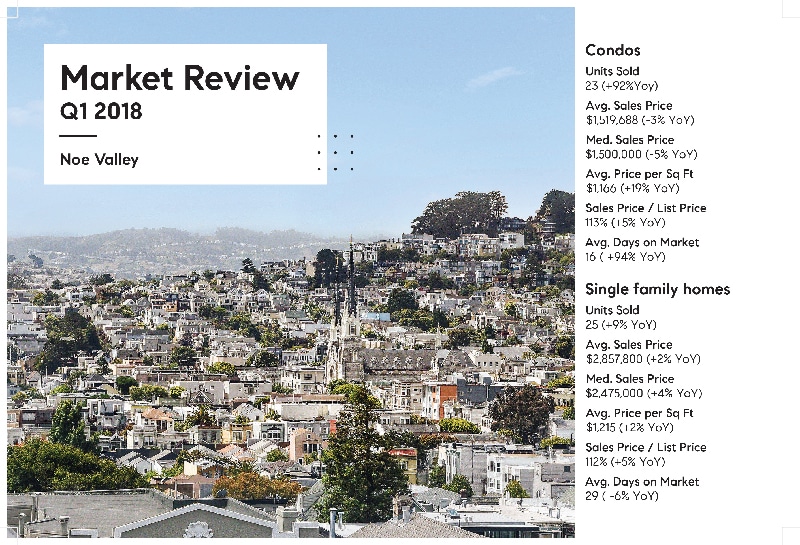Nestled among the hills in San Francisco, there’s a quiet residential neighborhood called Noe Valley. With stately Victorian and Edwardian houses and a slower pace, it feels more like a village than a part of the urban core, which is one of the reasons Noe Valley real estate is constantly in high demand. It’s a marvelous little oasis, with all the amenities of a small community and all the convenience of the big city. Noe Valley is perfect for working professionals, young families, and anyone else who wants a break from the urban hustle.
Noe Valley has gone through many incarnations. Over the centuries, Noe Valley has gone through a number of changes, and despite some ups and downs, it’s always been a kind place with a good heart. This area of San Francisco has been a welcoming home to many, from all walks of life, and it remains a neighborhood that people are proud to call home.
Not much is known about Noe Valley prior to European immigration and colonization. There don’t seem to have been any major settlements, but the terrain of the valley would have lent itself well to deer hunting. The area was inhabited by the Ramaytush, a subdivision of the Ohlone Native Americans, and may have been used by the nearby Huimen peoples, a local group of Coast Miwok speakers.
(A note, that these designations, though common in scholarship since the 1970s, don’t always reflect the socio-political identities the groups might have expressed to define themselves. These are based on primarily linguistic, as well as anthropological evidence.)
Noe Valley gets its name from José de Jesús Noé, the last alcalde (mayor) of Yerba Buena, which would become San Francisco when the state of California was admitted in 1850 (though it had been a US Military territory as early as 1848 as part of the Treaty of Guadalupe Hidalgo, which ended the Mexican-American War). However, before it was Noe Valley, it was “Horner’s Addition” named for John Meirs Horner who changed the area from the pastureland of the Rancho do San Miguel into a residential neighborhood. Having purchased the land, and funded the development, it was his intent to profit from the Noe Valley real estate sales. It was he who laid out the street grid, and even today, Elizabeth Street is named not for the queen, but for Horner’s wife.
Running from Noe Valley through the Mission, connecting to a mainline at Harrison Street, there used to be a railroad. Even today, you can trace the path right through Juri Commons Park, a relic of the old right-of-way. As far back as 1864, there was a rail line connecting San Francisco to Palo Alto, with two trains running daily (largely to shuttle factory workers). It was merged into the Central Pacific Railroad a few years later, and many of those original lines are still in use.
The lines through Noe Valley, however, are long gone. Even during the first half of the 20th century, trains ran along elevated lines, with railroad bridges to cross roadways and intersections, sometimes within just a few feet of residences. The passenger lines faded, but the tracks were still used for freight through the 1940s. Ultimately, they proved superfluous as technology improved, and most of the line was replaced with Highway 280. Still, the rail lines, like in Juri Commons Park, can still be traced from the scars they left on the nascent city grid.
This is one of those skeletons in the closet. At the turn of the 20th century, Billy Goat Hill, at Castro and 30th, was the site of a quarry. This quarry was one of several owned by George and Harry Gray. The Gray brothers were not well-liked and were the target of numerous lawsuits. In particular, they were accused of using explosives too liberally, damaging nearby homes and injuring a great many people with flying debris. Beyond that, they were accused of producing substandard bricks, and routinely stiffing their employees.
Indeed, it was one disgruntled employee who ultimately brought down the company. In 1915, Joseph Lococo went to the Upper Noe Quarry to demand that he be paid back wages amounting to $17.50 (adjusted for inflation, that’s about $430). Accounts differ, but what’s known is that George refused and perhaps made a dismissive gesture, and Lococo shot him dead.
Lococo caught a streetcar, left the scene, and turned himself in to police a short time later, voluntarily. His trial was high-profile, and closely watched by the neighborhood. It’s reported that when he was acquitted, nominally by reason of temporary insanity (and unofficially because his act was generally considered to have been a public service) the courtroom erupted in applause.
Noe Valley real estate did not suffer significant damage after the 1906 earthquake. Although the fire claimed much of the nearby Mission district, Noe Valley was almost completely unscathed. Indeed, the neighborhood was instrumental in the relief efforts, offering shelter and provisions, and assisting in the rebuilding phase.
Since it escaped destruction, it still boasts the original Victorian houses laid down by Horner, making Noe Valley a piece of living history.
Noe Valley has come a long way from its blue-collar roots. As it became popular with urban professionals in the 1970s and its commercial sector began to grow, the neighborhood added a kind of distinction to its already welcoming reputation. Of course, demand grew in the 1990s with the rise of Silicon Valley, and today Noe Valley real estate is especially popular with families and working professionals.
If you’re looking for a break from the urban pace, or a dream home in a quiet, friendly neighborhood, give Danielle Lazier + Associates a call. We are San Francisco’s real estate experts, and we’re ready to get you the keys to your dream home. And if you’re looking to sell Noe Valley real estate, we’re experts with that, too!

